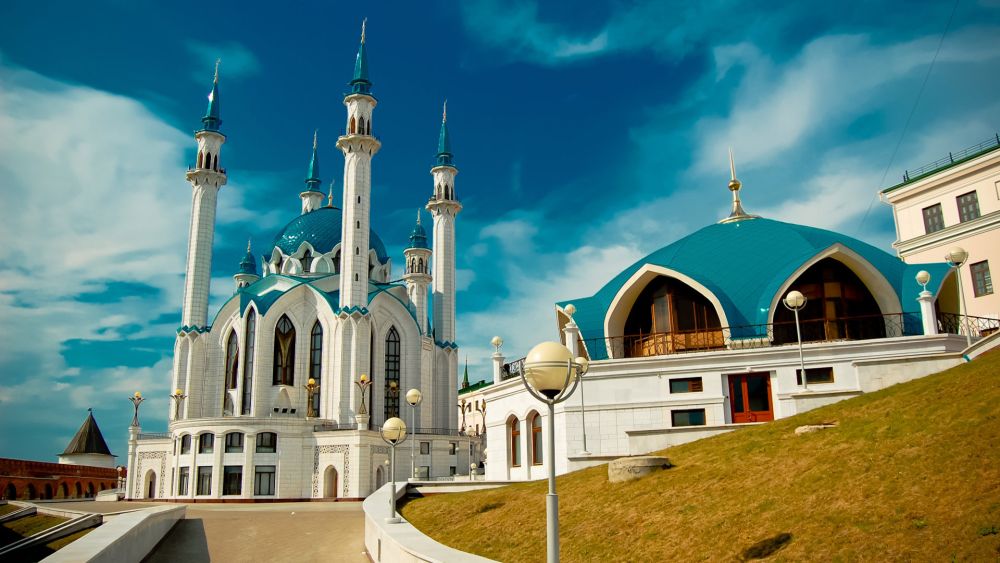

The Qol Sharif Mosque holds a profound place in the history of Kazan, Russia. Originally built in the 16th century, it was named after Qol Sharif, who was a religious scholar and the imam of the mosque. Sadly, during the Siege of Kazan in 1552, the mosque was destroyed by Ivan the Terrible's forces. With time, the mosque became a symbol of the city's resilience and cultural identity.
The idea of reconstructing the mosque was conceived after the fall of the Soviet Union, with efforts accelerating in the 1990s as part of the revival of Tatar culture. The reconstruction of the Qol Sharif Mosque was completed in 2005, coinciding with Kazan's millennium celebrations. Today, the mosque stands not only as a spiritual center for Muslims in the region but also as a testament to the rich history and cultural diversity of Kazan.
The Qol Sharif Mosque quickly became a significant tourist attraction in Kazan. It is admired for its grand architecture that blends Islamic traditions with modern design, and its location within the Kazan Kremlin — a UNESCO World Heritage site — adds to its appeal for visitors. Tourists are drawn to its serene environment, the azure-blue domes, the intricate decorations, and the overall peaceful experience it offers.
Beyond its architectural grandeur, the mosque serves as a cultural link that allows tourists to explore the Tatar heritage and Islamic history of the region. The mosque includes a library, a publishing house, and the Islamic Culture Museum, which provides insights into the art, history, and religion of the Tatar people and the broader Islamic world.
Due to its importance as a historical and cultural landmark, the Qol Sharif Mosque has seen consistent interest from visitors all over the world. In recent years, there has been a rising trend in cultural and educational tourism, with people seeking out destinations that offer historical knowledge and cultural experiences.
Importantly, Kazan has been positioning itself as a hub for international sports events and conferences, which has brought an increased number of visitors to the city, many of whom visit the mosque. Furthermore, the Russian government has been simplifying visa procedures to encourage tourism, making landmarks like the Qol Sharif Mosque more accessible to international travelers.
Increasingly, digital platforms and social media have a significant influence on tourism trends. The stunning visuals of the Qol Sharif Mosque shared online continue to attract visitors. In addition, there has been a growing interest in sustainable tourism practices, and the mosque's management has been involved in initiatives to ensure the site is preserved for future generations.
When visiting the Qol Sharif Mosque, it's important for tourists to respect the religious practices and dress codes common to Islamic holy sites. The mosque is open to visitors of all faiths, and tours are available for those interested in learning more about the mosque's history and significance. The best times to visit are typically in the mornings or late afternoons when the mosque is less busy with worshippers.
A trip to the mosque is often combined with tours of the surrounding Kazan Kremlin and other historical sites in the city, creating a comprehensive cultural experience for visitors. As tourism continues to evolve, the Qol Sharif Mosque remains a pivotal attraction, drawing those interested in the rich tapestry of history, architecture, and faith that Kazan has to offer.